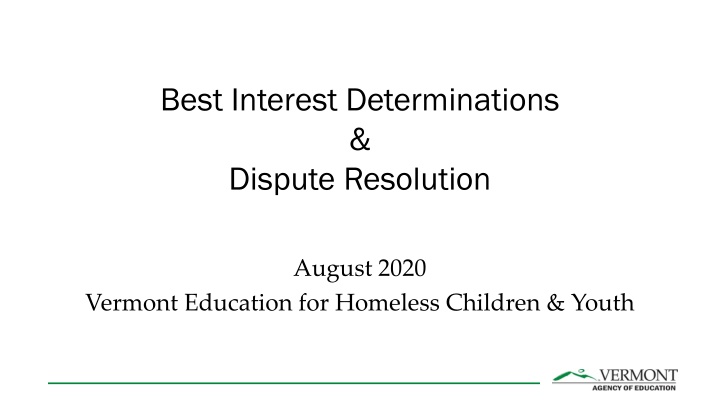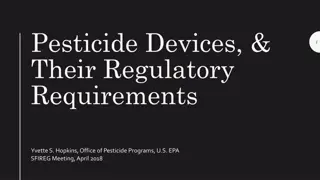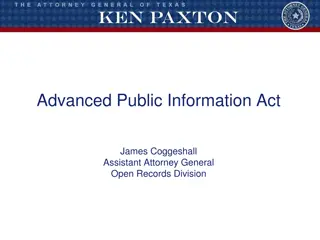Best Interest Determinations & Dispute Resolution in Homeless Education
Explore Best Interest Determinations and Dispute Resolution in the context of educating homeless children and youth in Vermont. Topics include McKinney-Vento definitions, school selection rights, determining student best interests, strategies for resolution, and more.
Download Presentation

Please find below an Image/Link to download the presentation.
The content on the website is provided AS IS for your information and personal use only. It may not be sold, licensed, or shared on other websites without obtaining consent from the author.If you encounter any issues during the download, it is possible that the publisher has removed the file from their server.
You are allowed to download the files provided on this website for personal or commercial use, subject to the condition that they are used lawfully. All files are the property of their respective owners.
The content on the website is provided AS IS for your information and personal use only. It may not be sold, licensed, or shared on other websites without obtaining consent from the author.
E N D
Presentation Transcript
Best Interest Determinations & Dispute Resolution August 2020 Vermont Education for Homeless Children & Youth
For todays presentation Please mute your microphone Please turn off your web cam Feel free to ask questions in the chat box This session will be recorded and posted to the website: https://education.vermont.gov/student-support/federal-programs/homeless-education
Todays topics Review McKinney-Vento Definition of Homelessness School of origin & local attendance area school Determining Best Interest Student rights & LEA requirements Strategies & questions to ask Dispute Resolution Process
McKinney-Vento Definition & School Selection Rights
McKinney-Vento Definition of Homeless Children or youth who lack a fixed, regular, and adequate nighttime residence, including children and youth: Sharing the housing of other persons due to loss of housing, economic hardship, or a similar reason Living in motels, hotels, trailer parks, or camping grounds due to the lack of alternative adequate accommodations Living in emergency or transitional shelters, or are abandoned in hospitals Living in a public or private place, not designed for or ordinarily used as regular sleeping accommodation for human beings Living in cars, parks, public spaces, abandoned buildings, substandard housing, bus or train stations, or similar settings Migratory children living in the above circumstances
Example It s August and the Moore family is trying to enroll their daughter in your school. Their daughter, Stephanie, is entering 7thgrade. The family explains that they have been living in a shelter since May. The family is still in the shelter and is not sure when they will be able to get permanent housing. Is Stephanie eligible for McKinney-Vento? Living in a shelter
School of Origin The school that a child or youth attended when permanently housed, or The school in which the child or youth was last enrolled
School of Local Attendance Area Any public school that non-homeless students who live in the attendance area in which the child or youth is actually living are eligible to attend
Example The Moore family continued: Mr. Moore explains that Stephanie was able to stay in her elementary school last year under McKinney-Vento, even though the shelter where they are staying is in a different district. She has completed the final grade in her elementary school and her parents would like her to continue into 7th grade with her peers. That school is also not within the attendance area of the shelter. Where can Stephanie enroll? School of origin definition includes receiving schools, so the middle school that is receiving students from Stephanie s elementary school is an option School of local attendance area: school that serves the attendance area of the shelter
Duration of Rights Homeless children and youth have the right to attend the school of origin for the duration of homelessness In any case in which a family becomes homeless between academic years or during an academic year For the remainder of the academic year, if the child or youth becomes permanently housed during an academic year
Example The Moore family continued: Stephanie is enrolled in 7th grade at her school of origin, with the LEA providing transportation to and from the school. It s now October and you find out that the Moore family has secured an apartment and is now permanently housed. Can Stephanie remain in her school of origin? For how long? Stephanie remains eligible for all McKinney-Vento services until the end of the academic year in which she became permanently housed she can remain in her school of origin until the end of the school year
School Placement LEAs must make school placement determinations based on the best interest of the homeless child or youth Using this standard of best interest, LEAs must: Continue the child s or youth s education in the school of origin Enroll the child or youth in the local attendance area school
School of Origin & Best Interest The law assumes that keeping a student in the school of origin is in the best interest of the student The LEA must, to the extent feasible, keep a student experiencing homelessness in the school of origin, unless it is against the wishes of the parent/guardian or unaccompanied youth
to the extent feasible What should be considered when determining the extent to which it is feasible to educate a child or youth experiencing homelessness in the school of origin? Student-centered, individualized factors related to the child s or youth s best interest These can include factors related to the impact of mobility on: Achievement Education Health Safety
Factors to Consider Factors must be student-centered and individualized Student s age Distance of the commute/impact on student s education Safety concerns Student s need for special instruction Length of anticipated stay in a temporary shelter Time remaining in the school year Placement of siblings
Special Considerations for Preschool-age Children School and program stability is critically important for this particularly vulnerable population LEAs may consider the following additional factors for preschool-age children: Child s attachment to preschool teachers & staff Impact of school climate on the child, including the school s safety Availability and quality of services to meet the child s comprehensive needs Access to early childhood mental health consultants Travel time to and from school
Role of Liaison Ensure that homeless parents/guardians and youth understand all school selection options Reinforce the important of school stability and educational continuity Discuss with the parents/guardians or youth their unique circumstances Assist them with making the most appropriate choice
Questions to Consider Are there safety issues to consider? How permanent does the family s current living arrangement appear to be? How deep are the student s ties to the current school? How strong is the child academically? How anxious does the student seem about the transition? How do the programs/activities offered at the schools compare? How would the length of the commute to the school of origin impact the student s education?
Determining Best Interest In determining best interest, the LEA must: Presume that keeping the student in the school of origin is in the student s best interest Consider student-centered factors, including the impact of mobility on achievement, education, health, and safety Give priority to the request of the parent/guardian or unaccompanied youth
Best Interest Determination If, after conducting the best interest determination, the liaison determines that it is in the student s best interest to attend the school of origin: The LEA must provide transportation as requested by the parent/guardian or unaccompanied youth If, after conducting the best interest determination, the liaison determines that it is in the student s best interest to attend the local school: The local liaison should work with the liaison in that LEA to facilitate the transfer of records, etc.
Best Interest Determination If, after conducting the best interest determination, the local liaison determines that it is not in the student s best interest to attend the school of origin or the school requested by the parent, guardian, or unaccompanied youth, the LEA must provide: written explanation of the reasons for its determination information regarding the right to appeal the decision
Dispute Resolution Procedure Every State must have a procedure for the prompt resolution of disputes Intended to represent each party s view for objective consideration so disagreements can be solved quickly and in accordance with the McKinney- Vento Act Some LEAs may also have their own written policy for resolving disputes at the local level must be consistent with the State dispute resolution policy SEA Appeal Procedure
Dispute Resolution If a dispute arises over eligibility, school selection or enrollment: The student must immediately be enrolled in the school in which enrollment is sought, pending final resolution of the dispute, including all available appeals Students have the right to participate fully in school Students must receive all services for which they are eligible Students must receive transportation, as needed, to and from the school of origin The parent, guardian, or unaccompanied youth must be provided with a written explanation of : any decision related to the dispute the rights of the parent, guardian, or unaccompanied youth to appeal the decision
Written Notification & Rights to Appeal Parents/guardians or youth must be provided with a written explanation of any decisions related to eligibility, or school selection or enrollment made by the LEA or SEA Explanation about the reason for the decision should include (USED Non-Regs): Description of the action that is proposed or refused Explanation of why the action is being proposed or refused A description of any other options the school considered The reasons these other options were rejected A description of any other factors relevant to the school s decision and information related to the eligibility or best interest determination including the facts, witnesses, and evidence relied upon Rights to appeal & relevant timelines Contact information for local liaison & State Coordinator https://nche.ed.gov/homeless-liaison-toolkit/
Dispute Process Ensure that any written notice: Includes all relevant information Is as brief and simply stated as possible Is accessible/written in a manner understandable to all parents/guardians or youth Ensure that the dispute process is as informal and accessible as possible while allowing impartial and complete review Parents should be able to initiate the dispute process directly at the school, as well as directly with the liaison If parents or youth have access to email, the LEA should provide notices by email, followed by written notice in person or by mail
SEA-Level Appeals Timelines: 5 days after written notification from the school board to appeal to the SEA SEA will provide a written receipt within 10 days to the family/youth and the superintendent 30 days to investigate and make recommendation to Secretary If extension is needed, all parties will be notified Appeals can be either emailed or mailed Appeals should be addressed to the Secretary of Education (can be mailed/emailed to SC) Any communication during the dispute should include all parties
LEA Strategies Provide parents/youth with assistance in the dispute process: Ensure that they understand the dispute resolution timeline/deadlines Offer to assist in gathering information Minimize inconvenience Gather information respectfully and in accordance with FERPA Keep documentation of all dispute-related communications Ensure that the student is enrolled and fully participating in the school selected for the duration of the dispute process Follow up with the parent/guardian/youth and the involved school after the decision to assist with implementation, as needed
LEA Strategies Strategies to avoid disputes: Training the appropriate school staff on the McKinney-Vento Act Communicating in person with parents, guardians, and/or youth Training staff on trauma-informed approaches to working with families and youth in homeless situations
Who to Contact Katy Preston, State Coordinator for Homeless Education, katy.preston@vermont.gov Other resources: National Center for Homeless Education (NCHE) SchoolHouse Connection























